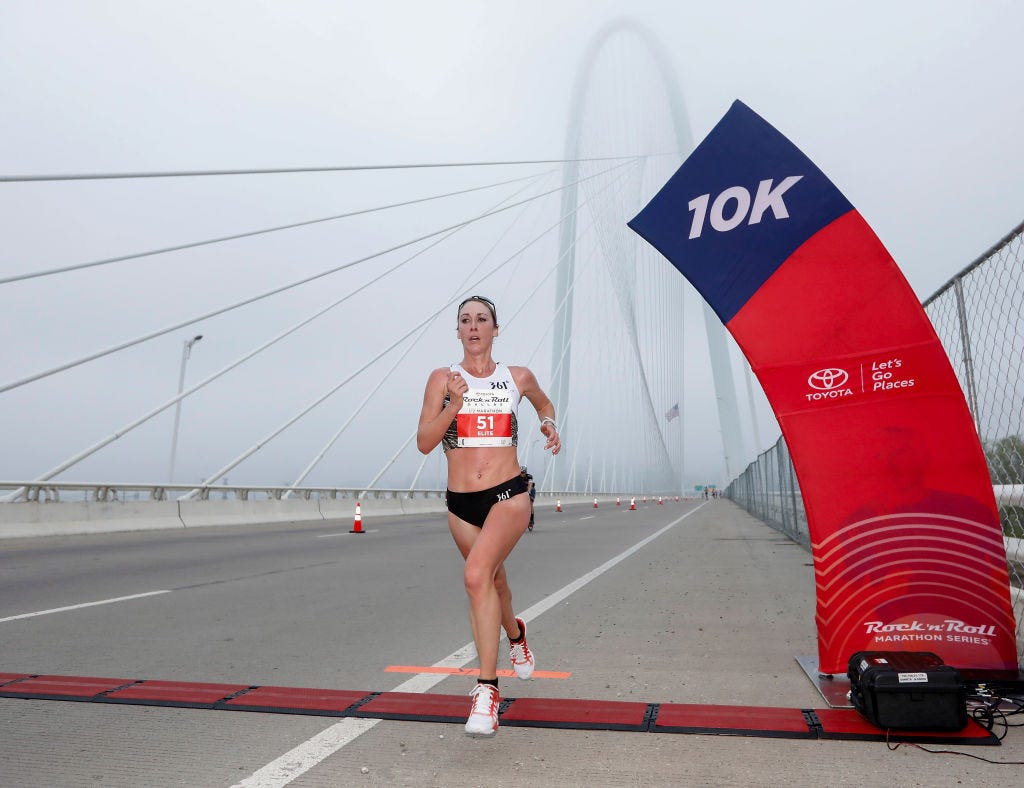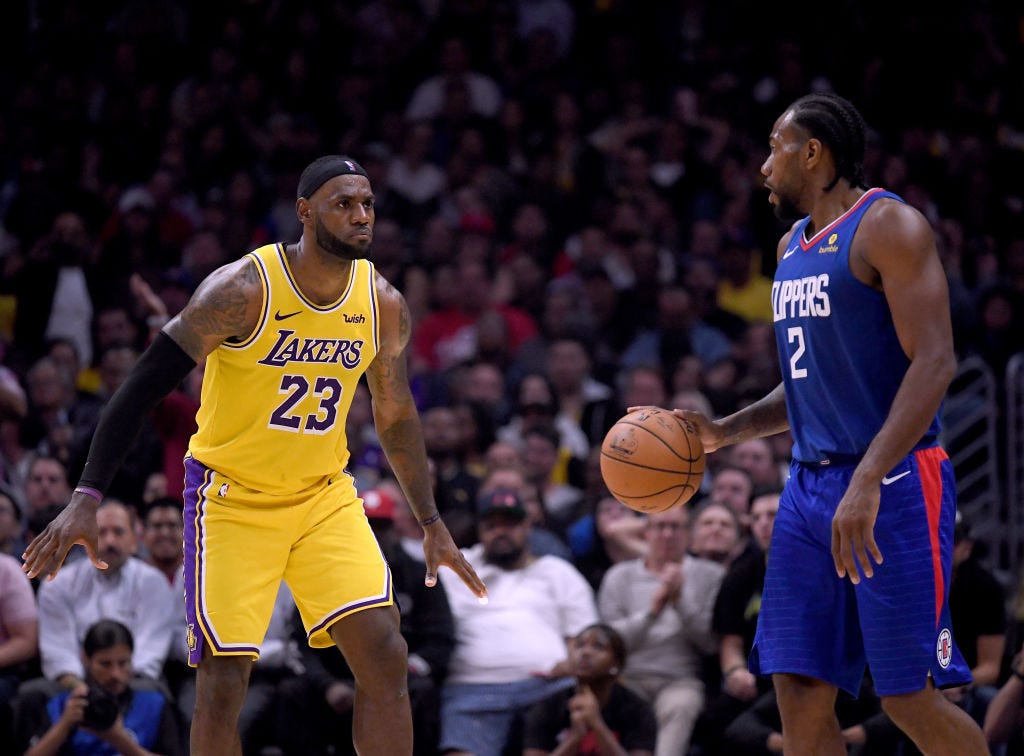Global Sport Matters: The Sport & the Body Issue (Part II)
Senior athletes pushing limits, NBA load management, fat-positive sports, closing the gap between "sports" and "fitness," and how science knows little about how the Pill impacts female athletes.
Welcome to Hreal Sports, a newsletter written by Patrick Hruby about sports things that don’t stick to sports. Sign up and tell your friends!
I’m excited to share the second batch of stories for the latest issue of Global Sport Matters, the digital publication of the Global Sport Institute at Arizona State University. As I’ve mentioned before, we cover a wide range of outside the lines, sports and society topics though original research and reporting, and via podcasts, live events, standalone articles, and monthly themed issues.
Our February issue is on Sport and the Body. We’re exploring the fundamental relationship between athletics, the human body, and the wide and changing range of issues associated with that. Links and summaries are below for stories on senior athletes pushing limits, NBA load management, fat-positive sports, closing the gap between "sports" and "fitness," and how science knows little about how the Pill impacts female athletes. Hope you enjoy!
(Oh, and for links and summaries of our first batch of stories— which cover body-shaming in college track and field, athletes coping with long COVID, sports world make-believe that CTE is a new risk, and a study on what sports may help you live longer—click here).
“Senior Athletes Are Doing the Unprecedented, And They Are Ready For More,” by Ray Glier.
Forget Tom Brady or Phil Mickelson. Across the U.S., older people continue to reach new athletic heights by taking advantage of scientific developments, new information, and an admirable drive to keep moving.
Kay Glynn woke up one January morning at her home in southwest Missouri, and it was 18 degrees. She was still going to practice pole vaulting, high jumping, and long jumping that day, but she took her time getting to the jumping pits in her “she-shed,” which does not have heat.
Glynn was reasonable and waited until noon – when it was 27 degrees. She layered on her clothing and walked out to the 100-foot-long metal facility for her two-hour daily workout.
“I went out there and found the water bottle I left the day before,” Glynn says. “It was frozen.”
What’s more remarkable than Glynn’s willpower in working out in freezing weather is that she is 69 years old, has eight grandchildren, and pole vaults, long jumps, and high jumps. She competes all over the country in USA Track & Field Masters events, state Senior Olympics, the National Senior Games, and other assorted events. She has held world masters records indoors and outdoors for the pole vault.
“When I started back into athletics, about 15 years ago, I just did it because someone said it’s fun,” Glynn says. “Now, I go out in that cold because I know I’m going to feel better when I get done. I know I can’t stop because then I’ll just start to age, and that’s like, painful.
“There will be aches and pains if I don’t do something physical every day.”
“The Fat-Positive Potential of Sports,” by Britni de la Cretaz.
Athletes with bigger bodies are often stigmatized as less athletic or unworthy of opportunity, but advocates are becoming more purposeful in creating spaces for “fat” athletes to thrive.
A running back can’t score a touchdown without her offensive line getting blocks. A rugby team contains “props,” who are a vital position and are colloquially referred to as “fatties” on the field as a term of endearment, not an insult. Larger bodies make great blockers in roller derby. And in throwing sports, like shot put, or strength sports, like powerlifting, “the bigger you are, the stronger you can be,” says JayCee Cooper, a powerlifter and self-identified fat athlete.
These sports place value on size: Large bodies are an asset in specific athletic circumstances. As a result, larger athletes don’t receive the same kind of negative scrutiny that they tend to receive in other sports. This can allow people – especially women – whose bodies are hypervisible and policed in other aspects of their lives, to find pride in what their bodies can do and the assets they are to a team or a sport. And yet cultural ideas about whom sports are for (thin people) and which kinds of bodies can be good at sports (thin ones) continue to exclude fat people – despite the fact that fat people are participating (and often excelling) at all levels of sport.
“What Happens When An Athlete Takes ‘The Pill’?,” by Patrick Hruby.
Athletes who menstruate face enormous decisions over whether to take contraceptives, how to measure their own physical performance while on “the pill,” and potentially when to stop the regimen. Surprisingly, medical science has little information to offer them.
Sarah Crouch assumed that someone would have an answer. A doctor, maybe. Or a coach. Someone. It was the early 2010s, and Crouch, a marathon runner, was about to get married. She didn’t yet want to have children, so she was considering birth control.
As a professional athlete running as many as 140 miles a week, Crouch knew that even small changes to her diet or training could have a large impact on her performance. “With distance running, you have to be consistent,” she says. “Day in and day out.”
Crouch wondered what she could expect if she started using an intrauterine device (IUD), an implant that keeps sperm cells from reaching an egg, or if she began taking oral contraceptives, commonly known as “the pill,” which work by manipulating hormone levels in the body to prevent pregnancy from occurring.
One day, Crouch sat down in front of her computer. She searched: effects of various types of birth control on runners.
“I pulled up absolutely nothing,” says Crouch, 32. “I was shocked. It was like nobody had ever studied it.”
“The NBA’s Conflicting Catch-All of ‘Load Management,’” by Katie Heindl.
The concept of load management took over the NBA last decade with the intention of maintaining athletes’ bodies, but since then, the term has become so loaded that it is difficult to make sense of team philosophies or player perspectives around rest and rehab.
Load management, as familiar now to an NBA fan as its athletes, is the practice of monitoring and restricting a player’s physical activity to reduce injury risk. The load refers to minutes, games, and specific physical actions, and the management could be imposing a minutes restriction or having a player sit out a game. Essentially, it’s precautionary rest.
It’s become something of a trigger word within the NBA, whether for fans who feel cheated when they miss out on seeing a player or a previous generation’s athletes criticizing the practice itself as coddling. Team to team, there’s no set definition of what it can entail. And for those who study the wear and tear on an athlete’s body, load management as a term and as a practice is equally as frustratingly vague. The rules implemented by the league around the practice are centered on optics over science, such as no healthy player being sat during nationally televised games or teams not sitting multiple players at once, hefty fines being the main consequence.
“Building a Better Movement Culture Will Require Inclusion and Creativity,” by Natalia Mehlman Petrzela.
Building a stronger and more useful fitness culture in the United States will mean leaving behind outdated distinctions between sport and fitness, instead embracing all the best of both worlds to embrace all types of people.
Growing up in suburban Boston, I was intimidated by all things athletic and mostly stuck to what came easily: tearing through novels, filling up journals, and dialing in Top 40 radio requests that I would then capture on cassettes in my boom box. The cavernous gymnasium at my public high school? Not my comfort zone. While there were objectively challenging activities in the curriculum, such as rope climbing or ranked flexibility tests, I remember feeling most intimidated by a physical feat that presented itself before the teacher even blew the whistle: On some days, in a pattern I could never predict to “use my skips”' accordingly, the wooden bleachers would be locked shut and pushed close to the wall. The teacher would expect us to scale up the wooden slats to sit on top and await instruction.
As if Mount Everest might loom behind the gym’s double doors, I prayed each day before class that the bleachers would be open and accessible – or that if they weren’t, my scrawny arms might miraculously be able to hoist the heft of my legs, which teen magazines taught me were too big. I managed to complete the ascent a few times, flustered with embarrassment at my clumsiness as much as the exertion. I eventually found a solution to my discomfort, buried in the student rights and responsibilities manual: an “independent study” in physical fitness, an option the department head told me no one in his memory had ever asked to exercise.
This has been Hreal Sports, a newsletter written by Patrick Hruby about sports things that don’t stick to sports. If you have any questions or feedback, contact me at my website, www.patrickhruby.net. And if you enjoyed this, please sign up and share with your friends.








